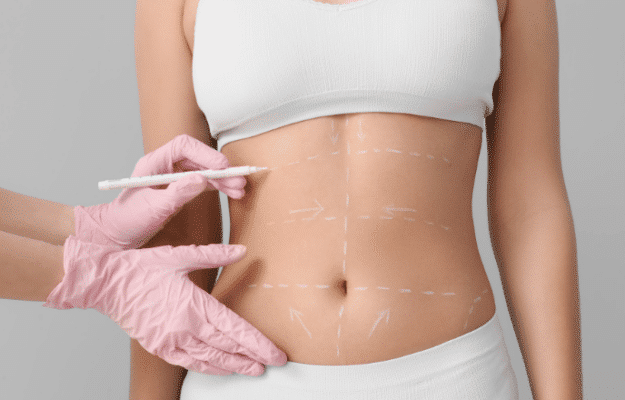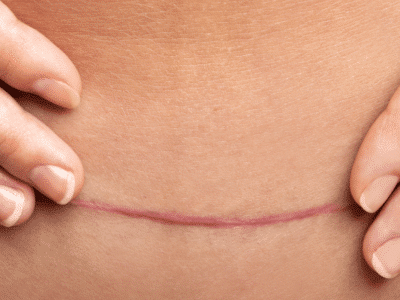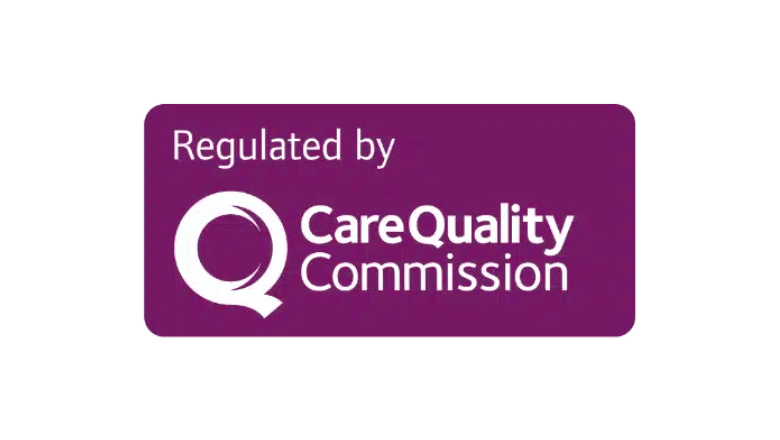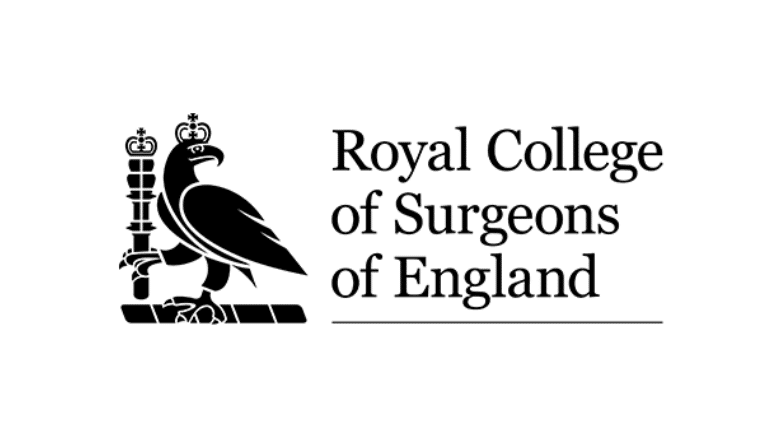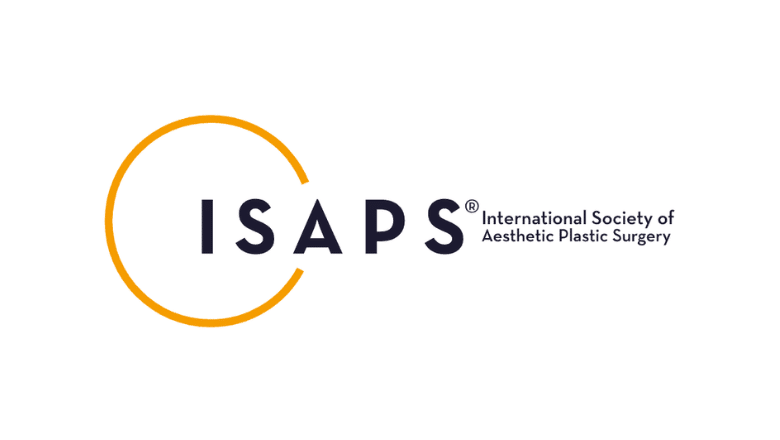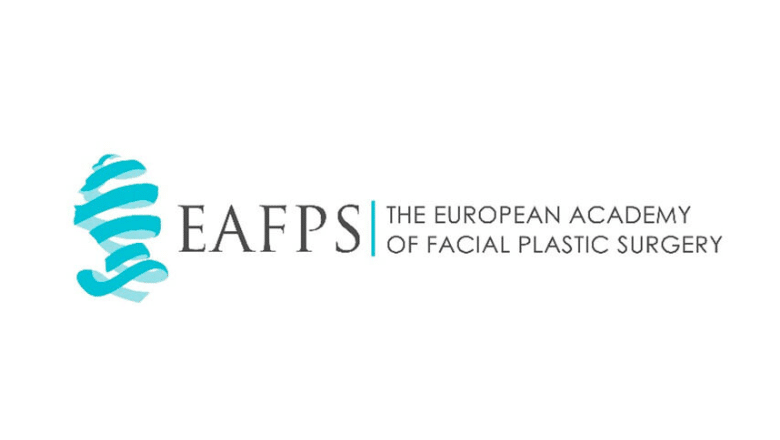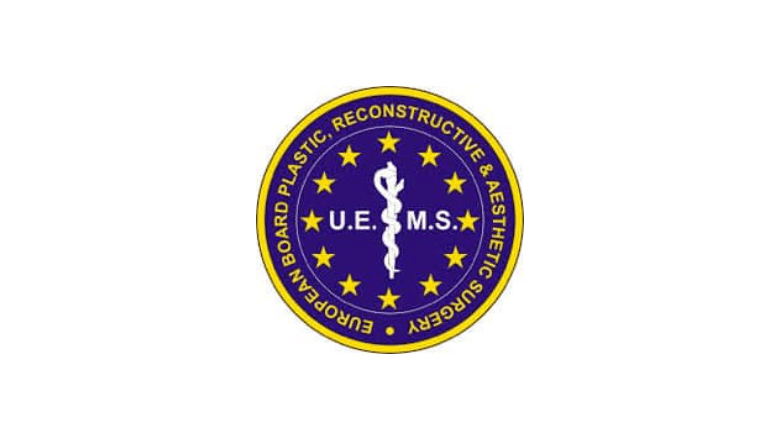
An arm lift, also known as a brachioplasty, is designed to remove excess loose and sagging skin affecting the upper arm. The procedure helps to smooth and tighten the skin and soft tissue to achieve toned-looking arms. Centre for Surgery is a specialist plastic surgery clinic in London. We are home to some of the top plastic surgeons in the UK with extensive experience in arm lift surgery. We are dedicated to providing high standards of medical care for patients who have successfully lost a significant amount of weight and have now been left with loose and saggy skin affecting their arms, also known as bat wings. Here, we answer your most commonly asked questions about arm reduction surgery.
What causes fat upper arms?
- Genetics: Some people may have a tendency to store fat in certain areas of the body, including the arms.
- Age: As we age, skin loses elasticity and can begin to sag, causing the appearance of flabby arms.
- Weight Gain: Significant weight gain can result in the accumulation of fat in various areas of the body, including the arms.
- Hormonal Changes: Hormonal imbalances, such as those that occur during menopause, can lead to fat accumulation in the upper arms.
- Lack of Exercise: Inactivity and a sedentary lifestyle can cause the muscles in the arms to weaken, leading to flabbiness.
Why are my arms so flabby?
One might wonder why their arms are noticeably flabby, and there are several explanations to this occurrence. A primary cause of sagging upper arm skin is often traced back to substantial weight reduction. When an individual loses a significant amount of weight in a relatively short span of time, the skin struggles to conform to the body’s new size, leaving you with extra skin that can sag or appear ‘flabby’.
Additionally, experiencing flabby arms is a common consequence of Bariatric Surgery or recurrent changes in weight. The repetitive cycle of gaining and subsequently losing weight can take a toll on the skin’s elasticity, leading it to stretch and retract time and again. As a result, the skin may eventually lose its ability to snap back into place, causing flabby, loose skin on various parts of the body, including the arms.
Moreover, ageing plays a crucial role in skin laxity. As the body ages, the production of collagen – a protein that contributes to skin elasticity – decreases, causing the skin to lose its firmness and appear saggy.
If the flabbiness of the arms becomes a concern due to aesthetic reasons or physical discomfort, a medical procedure known as Arm Lift or Brachioplasty might be the solution. This surgical method is exceptional in treating the issue at hand as it eliminates excess saggy skin along with some fat deposits. Consequently, it can help reinstate a more sculpted, toned look to the upper arms. This procedure can not only enhance one’s physical appearance but also boost self-esteem and comfort, giving an overall improved quality of life.
Is there plastic surgery for flabby arms?
Yes, there is a plastic surgery procedure called “Arm Lift” or “Brachioplasty” that can help to remove excess skin and fat from the upper arms. This procedure can result in a tighter, more toned appearance of the arms. However, it is important to note that plastic surgery is not the only solution for flabby arms and that other non-surgical options, such as exercise and weight loss, should be considered first.
How do you remove armpit fat?
Eradication of excess fat in the armpit region is a process frequently sought after by individuals who wish to enhance their body contour and appearance. This operation involves a careful procedure of selectively extracting adipose tissues, primarily using liposuction techniques, followed by a supplementary step of removing excess skin.
The procedure typically begins with liposuction. This technique implements a slender tube known as a cannula, which is carefully introduced into the target region via miniature incisions. The cannula is skilfully manoeuvred back and forth, thereby breaking up the fat cells, which are then evacuated from the body through a medical-grade suction device or a syringe coupled to the cannula. This highly effective procedure removes stubborn fat accumulations that have resisted the effects of diet and exercise.
Following the liposuction process, if deemed necessary, the procedure may entail the excision of surplus skin to attain a more defined result. Based on the degree of skin laxity, a surgeon may opt for a surgical technique called an arm lift or brachioplasty. This method involves the removal of the excess skin and consequent tightening of the area, leading to a smoother and more appealing appearance.
How do you fix bat wing arms?
The occurrence of ‘batwing’ arms, a term used to describe sagging skin and excess fat in the upper arm region, can be effectively addressed through a surgical procedure known as Brachioplasty, or more commonly, an Arm Lift. This process is adept at dealing with this concern, providing an immediate and noticeable enhancement in the appearance of the arms.
RELATED: How to Get Rid of Bingo Wings
Brachioplasty is a procedure designed specifically to rectify the appearance of ‘batwing’ arms. It involves a dual approach of eradicating excess fat tissue and removing surplus skin from the upper arm area. Firstly, any unnecessary fat is meticulously extracted, often using liposuction techniques to break down and remove the fat deposits. Following this, the procedure involves the excision of surplus, sagging skin, which is then carefully reshaped and tightened to provide a more streamlined and toned appearance to the arms.
The results of a brachioplasty are typically visible immediately following the procedure, offering significant enhancement to the silhouette and contour of the upper arms. While the surgery does involve a period of recovery, the outcome can significantly improve an individual’s self-confidence and comfort.
Am I suitable for an arm lift?
Determining whether you are an apt candidate for a Brachioplasty or Arm Lift procedure necessitates a thorough evaluation of your personal circumstances and health condition. It might be the right course of action for you if the following criteria apply:
- Significant Weight Loss: If you have undergone considerable weight loss which has resulted in loose, sagging skin on your upper arms, an Arm Lift may help restore firmness and definition.
- Dissatisfaction with Upper Arm Appearance: If you are experiencing discontentment or embarrassment due to the altered appearance of your upper arms, especially if it is affecting your self-confidence or limiting your clothing choices, an Arm Lift could provide a solution.
- Realistic Expectations: It’s important to understand what a Brachioplasty can and cannot achieve. While it can significantly improve the appearance of your arms, it’s not a weight-loss solution, and the results might not be completely perfect due to necessary incisions and scarring.
- Stable Weight: Maintaining a stable weight for at least six months to a year before the procedure is essential. Major fluctuations post-surgery could affect the results and potentially lead to additional loose skin.
- Good General Health: If you are in good overall health and do not have any chronic medical conditions, particularly those affecting the heart or lungs, you are likely a better candidate for surgery. It’s vital that your body can handle the stress of the operation and the recovery period that follows.
- Non-smoker: Smoking can interfere with wound healing and overall recovery. Hence, individuals who do not smoke or are willing to quit before and after the surgery are considered better candidates for an Arm Lift procedure.
DIFFERENT TYPES OF BRACHIOPLASTY
What are the different types of arm lifts?
- Brachioplasty: full arm lift that removes excess skin from the upper arm.
- Mini Brachioplasty: limited arm lift that addresses issues in the lower portion of the upper arm.
- Extended Brachioplasty: full arm lift that removes skin from the upper arm and the armpit.
- Liposuction: removes excess fat from the upper arm using a suction technique.
What is a full arm lift?
A full arm lift, also known as brachioplasty, is a surgical procedure to remove excess skin and fat from the upper arms and to tighten and smooth the underlying tissue to create a more toned appearance.
What is a mini arm lift?
A mini arm lift, also known as a limited incision brachioplasty, is a less invasive surgical procedure to improve the appearance of the upper arms by removing excess skin and fat. Unlike a full arm lift, the incisions in a mini arm lift are smaller and typically located near the armpit, resulting in less scarring and a quicker recovery period.
RELATED: What is a mini arm lift?
Will I need an arm lift after weight loss?
However, not everyone who loses weight will require an arm lift. The need for this procedure will depend on the individual’s specific circumstances, such as the amount of weight lost, the elasticity of their skin, and the overall condition of their upper arms.
It’s important to consult with a plastic surgeon or specialist to determine if an arm lift is necessary for you after weight loss.
How much skin can be removed in an arm lift?
PREPARATION
How to prepare for arm lift surgery
- Consult with a plastic surgeon: Schedule a consultation with your plastic surgeon to discuss the procedure and make sure it is right for you.
- Stop smoking: If you smoke, you will need to quit several weeks before and after surgery, as smoking can impair healing.
- Adjust medications: Certain medications, such as aspirin, can increase the risk of bleeding during surgery, so you may need to stop taking them temporarily.
- Prepare your home: Have a family member or friend help you prepare your home for recovery, including arranging for assistance with daily activities and getting any necessary medical equipment.
- Follow preoperative instructions: Your surgeon may provide instructions on diet, medications, and skin care prior to surgery. Follow them carefully to maximise the chances of a successful outcome.
PROCEDURE
Is Brachioplasty a major procedure?
An arm lift is categorised as a major surgical procedure. Like all invasive operations, this surgery requires a significant level of medical intervention and necessitates a proper pre-operative preparation, followed by a recovery period post-procedure.
An arm lift involves the removal and tightening of excess, sagging skin and fat tissues from the upper arm region. This process is typically performed under general anaesthesia, requiring close monitoring by a skilled anaesthesiologist and medical team. Furthermore, the procedure involves making incisions, the extent and location of which depend on the amount of excess skin and the specific techniques employed by the surgeon.
How long is an arm lift surgery?
The duration of an arm lift surgery, also known as brachioplasty, can vary depending on various factors, such as the extent of the procedure and the individual’s specific needs. Typically, the surgery can take anywhere from one to three hours to complete. However, it’s important to note that the duration may be longer if additional procedures are combined with the arm lift or if there are any complications during the surgery.
How long does arm lift surgery take?
The duration of an arm lift (brachioplasty) procedure can vary depending on the extent of the procedure and the individual patient’s specific needs. On average, an arm lift procedure can take between 1 to 3 hours to complete.
Arm lift surgery is typically performed under general anaesthesia and may require an overnight stay in the hospital. Recovery time can also vary, but most individuals can expect to return to normal activities within 2 to 4 weeks. However, it may take several months for the swelling to completely subside and for the final results to become fully apparent.
RECOVERY AND HEALING
How long is the recovery time after an arm lift?

The recovery time after an arm lift can vary depending on the extent of the procedure, your overall health, and your body’s ability to heal. On average, most people can return to work and light activities within 2-3 weeks after the procedure, but it may take several months for a full recovery and for swelling to subside completely. During the first few weeks of recovery, you may need to avoid heavy lifting and strenuous activities and follow your surgeon’s post-operative instructions carefully. Your surgeon will provide specific guidance on when you can resume normal activities and when you should expect to see the final results.
RELATED: Recovery After Arm Lift Surgery – Top Tips
How do you reduce swelling after an arm lift?
To reduce swelling after an arm lift:
- Keep your arms elevated above heart level.
- Apply cold compresses or ice packs to the affected area.
- Wear compression garments as instructed by your surgeon.
- Avoid strenuous activities and heavy lifting.
- Follow a healthy diet and stay hydrated.
- Massage the affected area gently to improve circulation.
- Take any prescribed pain medication as directed.
- Follow all postoperative instructions given by your surgeon.
RELATED: How To Reduce Swelling and Bruising After Arm Lift Surgery
Is an arm lift painful?
An arm lift is usually performed under general anaesthesia and is considered a surgical procedure, so some level of discomfort and pain can be expected during the recovery period. However, the extent of pain experienced can vary greatly among individuals and depends on factors such as the individual’s pain tolerance, the extent of the procedure, and the use of pain management techniques such as medication and nerve blocks. Most patients report some discomfort, swelling, and tightness in the treated area during the first few days after the procedure, but these symptoms typically subside within a week or two. The surgeon will typically provide pain management instructions to help minimise discomfort during the recovery period.
When does arm lift pain go away?
After an arm lift or upper brachioplasty, the initial pain and discomfort typically subside within a week or two after the surgery. However, it’s important to note that individual experiences may vary, and some patients may continue to experience mild discomfort or sensitivity for a longer period.
During the first week of recovery, you can expect the most intense pain and discomfort. Your surgeon will likely prescribe pain medications to help manage the discomfort during this initial stage. Following the first week, the pain gradually diminishes as your body heals.
It is normal to experience some swelling in the treated area, which can contribute to discomfort. Swelling can persist for several weeks or even months, but it should gradually decrease over time as your body continues to heal.
How do you sleep after an arm lift?
After an arm lift, it is recommended to sleep with your arms elevated on pillows to reduce swelling and discomfort. Avoid sleeping on the arms for the first few nights. Follow your doctor’s postoperative instructions for the best recovery.
Can you sleep on your side after an arm lift?
How long after arm lift can you lift your arms?
How long after Brachioplasty can I exercise?
The length of time it takes to return to exercise after brachioplasty depends on your individual healing process. It is generally recommended to wait 2-6 weeks before starting light exercises, such as walking or gentle stretching. Avoid strenuous activities, such as weight lifting or cardio, for at least 4-6 weeks or until cleared by your surgeon. It’s important to listen to your body and allow yourself enough time to fully recover before resuming normal physical activity. It’s also essential to follow all post-operative instructions given by your surgeon.
When can I stop wearing a compression garment after an arm lift?
How long does an arm lift take to heal?
The initial healing process after an arm lift typically takes one to two weeks. During this time, the incisions should close and start to heal. However, it’s important to note that the complete healing of the incisions and the final results of the arm lift may take more time.
While the incisions may appear to be healed within a week or two, it’s essential to understand that the body continues to undergo a process of scar formation and tissue reattaching beneath the surface. This process can take several months to complete fully.
During the healing period, it is crucial to prioritize rest and avoid engaging in strenuous activities that may strain or compromise the healing incisions. Your surgeon will provide specific post-operative instructions regarding physical activity restrictions and care for your arms during the healing process. It’s important to follow these guidelines to ensure optimal healing and reduce the risk of complications.
Keep in mind that the arms are an area of movement, and healing may take slightly longer compared to other parts of the body. Patience and proper care are key to achieving the best long-term results from your arm lift. It’s always advisable to consult with your surgeon if you have any concerns or questions during the healing process.
HOW TO MINIMISE SCARRING
How can I reduce scar tissue after an arm lift?
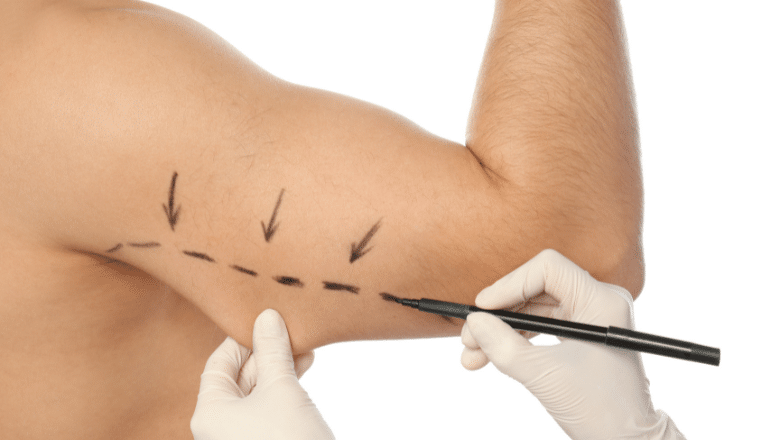
- Keep the incision clean and covered: Keep the incision clean and covered with a bandage or dressing as directed by your surgeon to reduce the risk of infection and minimise scarring.
- Use silicone sheets or gels: Silicone sheets or gels can help reduce the appearance of scars by keeping the skin moisturised and flat.
- Massage the scar: Massaging the scar can help to break down and soften scar tissue, making it less noticeable over time.
- Avoid sun exposure: Sun exposure can darken scars and make them more noticeable, so be sure to use sunblock and keep the affected area covered when outside.
- Avoid picking or stretching the scar: Picking or stretching the scar can cause further damage and increase scarring, so it’s important to avoid these actions.
RELATED: Arm Lift Scars – How to Reduce Scarring after Brachioplasty
Is arm lift surgery without scars possible?
It is generally not possible to have arm lift surgery without any scars. The procedure involves making incisions on the inner side of the upper arm to remove excess skin and fat. The incisions are carefully placed to minimise visible scarring, usually along the inner arm where they are less noticeable. Surgeons strive to create discreet incisions and employ various techniques to reduce scarring. However, it’s essential to understand that some degree of scarring is inevitable with any surgical procedure. Over time, the scars typically fade and become less noticeable, but they may still be visible, especially if you have a predisposition to develop prominent scars.
RELATED: BodyTite Arm Lift
Arm Lift Surgery at Centre for Surgery
Brachioplasty surgery is commonly requested by patients who have experienced significant weight loss, resulting in loose and flabby arms. Centre for Surgery is a specialist cosmetic surgery clinic. Our surgeons regularly perform excess skin removal surgery, including arm lifts, to achieve tighter and slimmer arms for a significant boost in self-confidence. Call us today to book an in-person consultation at our state-of-the-art Baker Street clinic in Marylebone. Our dedicated patient coordinators will be your personal point of contact throughout your journey with us at Centre for Surgery.

